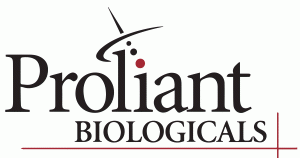Voices of Biotech
Podcast: MilliporeSigma says education vital to creating unbreakable chain for sustainability
MilliporeSigma discusses the importance of people, education, and the benefits of embracing discomfort to bolster sustainability efforts.
Sponsored by Proliant
 Bovine serum albumin (BSA) is a critical component of many biotechnology and biochemistry systems. BSA is used in a variety of applications, including diagnostics, veterinary medical products, vaccine manufacturing, mammalian cell growth for biopharmaceutical production, and topical and ex vivo medical device applications. The impact of BSA on the performance of these systems is often overlooked and is identified as a possible root cause of variability only after extensive testing and elimination of other system components.
Bovine serum albumin (BSA) is a critical component of many biotechnology and biochemistry systems. BSA is used in a variety of applications, including diagnostics, veterinary medical products, vaccine manufacturing, mammalian cell growth for biopharmaceutical production, and topical and ex vivo medical device applications. The impact of BSA on the performance of these systems is often overlooked and is identified as a possible root cause of variability only after extensive testing and elimination of other system components.
There are many different functions of BSA within the spectrum of biopharmaceutical applications. Diagnostic tests for both animal and human health industries use BSA as a protein carrier to stabilize low-abundance high-value proteins (e.g., monoclonal antibodies). BSA is used as an assay standard given the reproducible properties of a pure protein fraction and as a blocking agent to prevent nonspecific interactions with the functional components of the assay. BSA also is used as an inert surface coating to prevent nonspecific interactions on diagnostic devices and used extensively in enzyme-linked immunosorbent assays (ELISAs) (1, 2). For example, BSA coating the surface of a solid nanoparticle will improve circulating half-life by preventing opsonization and clearance through the renal system (3, 4). Finally, BSA is also a critical component in defined media formulations for the production of biopharmaceutical compounds. BSA supports the growth of both mammalian and bacterial organisms through the binding and transport of key nutrients, growth factors, and hormones as well as the binding of toxic compounds (e.g., excess iron) (5). BSA plays a role in these applications, and consistent BSA product ensures reproducible diagnostic assay performance and cell growth.
Login to read the full PDF of the white paper.
References:
1 Jitsukawa T, et al. Increased Coating Efficiency of Antigens and Preservation of Original Antigenic Structure After Coating in ELISA. J. Immunol. Meth. 116(2) 1989: 251–257.
2 Fan DH , Yuan SW, Shen YM. Surface Modification with BSA Blocking Based On In Situ Synthesized Gold Nanoparticles in Poly(dimethylsiloxane) Microchip. Colloids Surf. B Biointerfaces 75(2) 210: 608–611.
3 Mariam J, Sivakami S, Dongre PM. Albumin Corona on Nanoparticles: A Strategic Approach in Drug Delivery. Drug Deliv. 23(8) 2016: 2668–2676.
4 Zhang X D, et al. In Vivo Renal Clearance, Biodistribution, Toxicity of Gold Nanoclusters. Biomaterials 33(18) 2012: 4628–4638.
5 Francis GL. Albumin and Mammalian Cell Culture: Implications for Biotechnology Applications. Cytotechnol. 62(1) 2010: 1–16.
You May Also Like